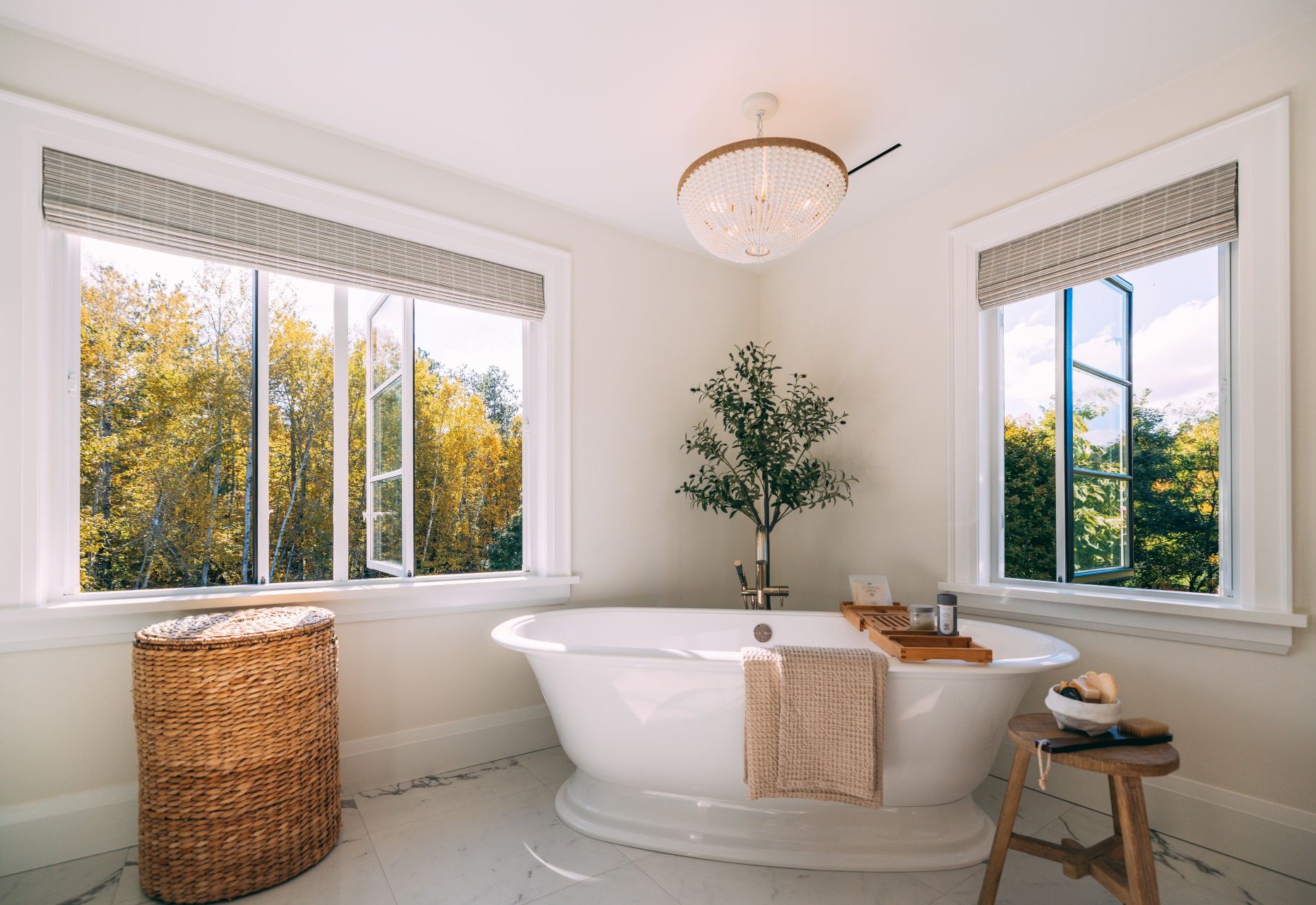
Window Styles & Comparisons
8 Casement Window Types for Every Home Style
Can't choose windows for your home? No worries, we've got you covered!
You've probably been considering casement windows, right? It's unsurprising - they are, after all, the most popular among homeowners! However, did you know that there are several casement window types? Single casement windows, French casement windows, crankless casement windows, to name a few...
So, if you want to discover more about different types of casement windows, as well as about their benefits and maintenance requirements, read on! We've included everything you need to know to choose casement windows wisely for your home renovation project!
Key Takeaways
- There are multiple casement window types: single casement windows, double casement windows, French casement windows, in-swing casement windows, crankless/push-out casement windows, bay/bow casement windows, casement windows with fixed panels, and cottage-style casement windows.
- Casement windows excel at energy efficiency, security, and airflow. Their full-opening sashes, tight seals, and multi-point locking systems provide superior ventilation, airtight performance, and safety compared to many other window types.
- With multiple options for frame materials, hardware finishes, glazing types, and decorative features, casement windows can be tailored to fit both traditional and modern homes. They are also relatively low-maintenance, with simple cleaning, lubrication, and seal inspection ensuring long-lasting operation.
8 Casement Window Types
In the following sections, we'll discuss 8 casement window types, as well as their pros and cons.
1. Single Casement Windows

Single casement windows have a single sash design. The sash is hinged at the side and swings open like a door. These windows are typically operated by a crank mechanism installed at the bottom of the frame.
Single casement-style windows are usually taller than they are wide, which maximizes vertical sightlines. Due to this design, single casement windows provide excellent ventilation and unobstructed views. They're also perfect for narrow walls with limited space.
Single casement windows are the perfect solution for rooms that need plenty of natural light. Plus, since they can be opened fully, they can catch breezes from various directions for maximum airflow in your living area. Casement windows suit both minimalist and traditional styles.
Energy efficiency is another key benefit: when closed, the sash presses tightly against the frame, forming a secure seal that minimizes drafts and reduces energy loss.
2. Double Casement Windows
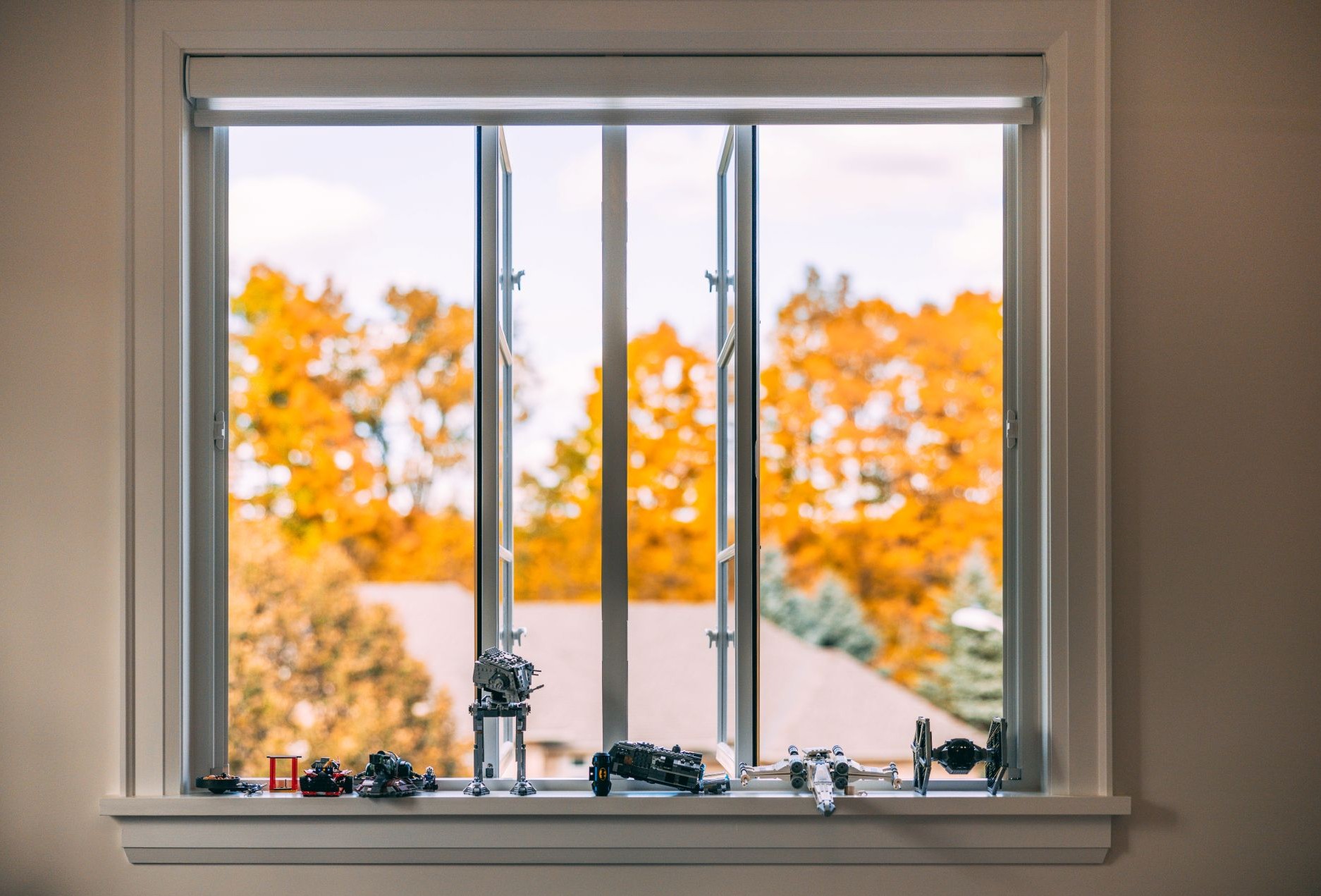
Double casement windows feature two sashes hinged on the sides. They open outwards independently. The sashes are usually separated by a mullion, which is a vertical structure installed in the middle.
This dual-sash design allows for customized airflow, as you can open one or both sashes to varying degrees. Double casement windows also feature an expansive glass area that lets in ample natural light and offers panoramic views of the outdoors.
Thanks to these features, double casement units are often preferred in living rooms, dining areas, and bedrooms, especially for larger wall spaces designed to frame outdoor views beautifully!
3. French Casement Windows
French casement windows are similar to double casement windows. They have two panels that open outwards. The difference between French casement units and double casement units is that the French ones don't have a middle mullion. Both sashes open fully outwards, leaving a wide, unobstructed opening that is excellent for panoramic views.
The absence of a center divider not only enhances visibility. This also makes French casement units perfect as emergency exits, given that most of the time, they meet egress requirements.
4. Crankless Casement Windows
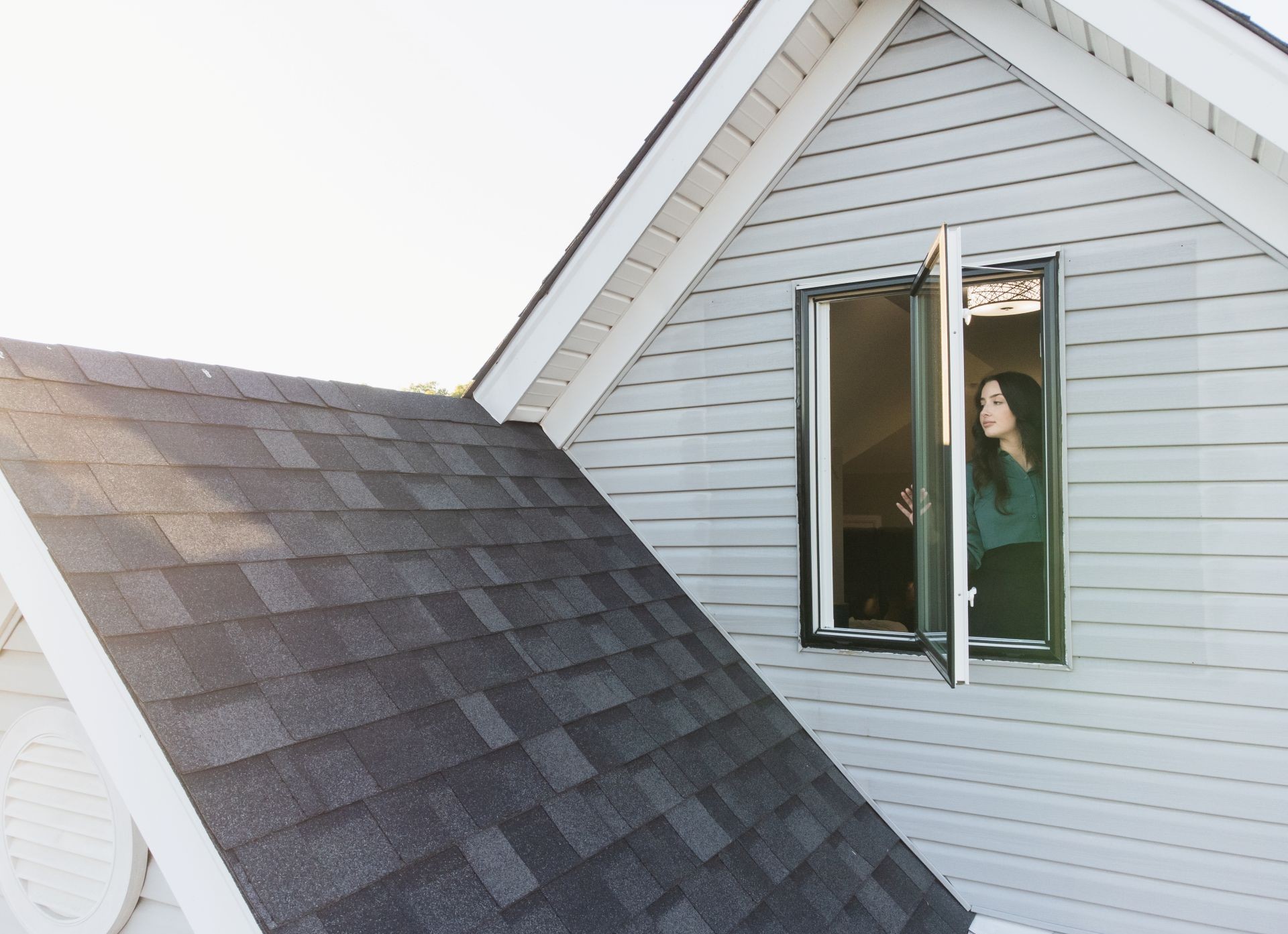
One of the most popular modern casement windows are crankless casement windows, which can also be called push-out casement windows, given that they are not operated by a crank.
Why are they so popular? Because crank opening mechanisms are mechanically flawed. Cranks need to be replaced way too often, not to mention that the traditional casement window design (in which the top of the sash simply follows the bottom part when you open the window) can cause sash sag and other structural issues that affect the window's integrity.
Crankless casement units, on the other hand, have no such issues. Magic's design, for example, features our patented Parallex hardware that completely eliminates the need for cranks. Our casement windows are operated by a handle and can be pushed open easily. The sash remains fixed both at the top and at the bottom, sliding seamlessly along a track.
5. In-Swing Casement Windows
In-swing casement windows, as their name suggests, operate like standard casements but swing inwards instead of outwards. Hinged on one side, the sash moves into the interior space. Because of this, in-swing units are especially practical for homes where exterior clearance is limited, such as along patios, balconies, or walkways where outward-swinging windows might obstruct movement.
One of their biggest advantages is ease of cleaning. Since the window opens inwards, both the interior and exterior glass surfaces can be cleaned from inside the home. You won't need ladders anymore! And you won't have to lean out of the window!
Security is another benefit: when closed, the sash presses tightly into the frame on the inside, making it harder for intruders to tamper with it from the outside. This makes them a smart choice for ground-floor rooms or urban areas where additional safety is a concern.
6. Bay/Bow Casement Windows
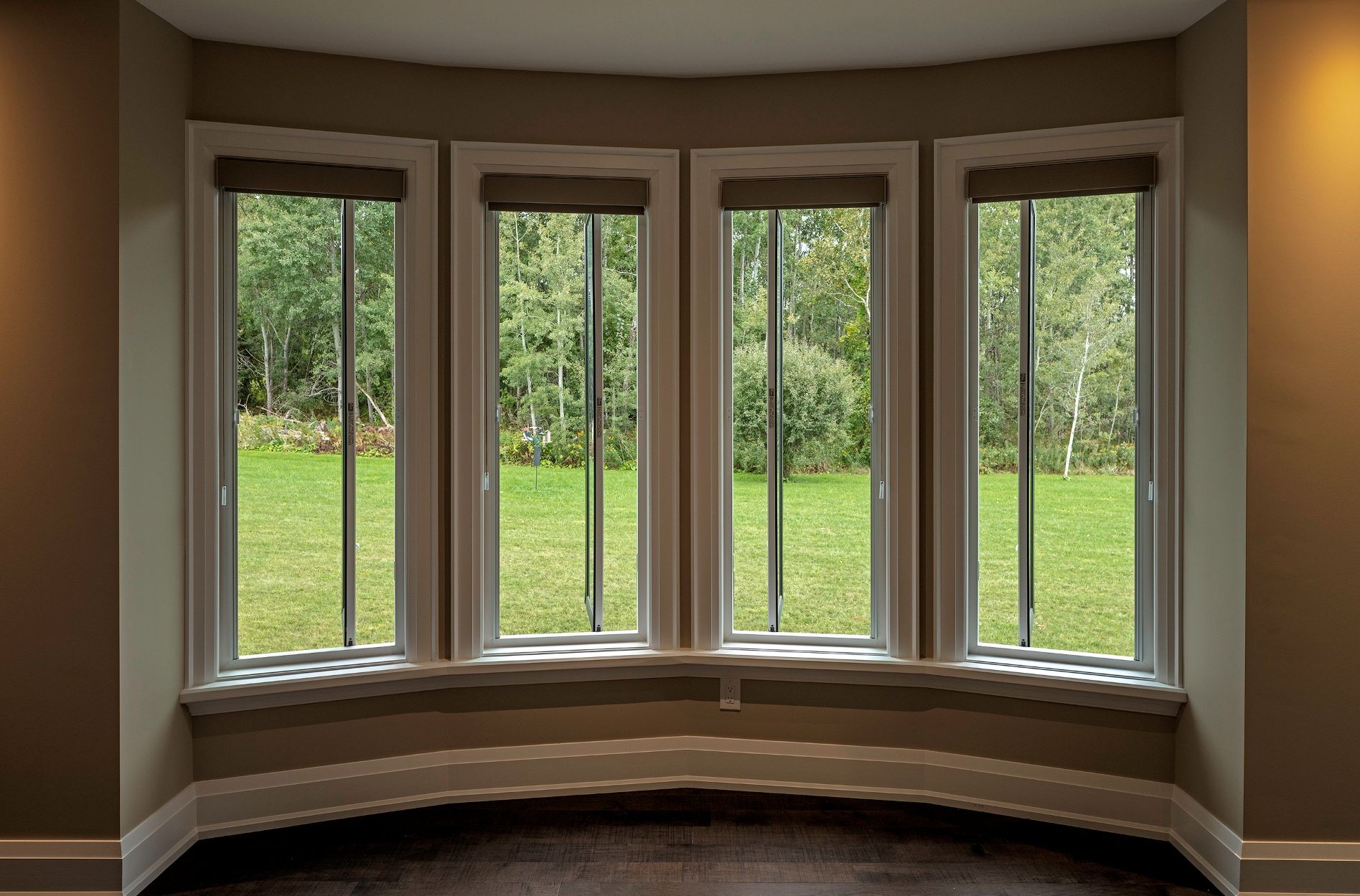
Bay and bow windows are larger, architectural window arrangements that extend outwards from the home’s exterior wall, creating extra interior space and a striking focal point.
- Bay windows feature an angular projection with three main window sections: typically a large fixed window in the center flanked by two casement windows on each side. The angled design maximizes natural light, allowing it to flood into the room from multiple directions while also enhancing ventilation through the side casements. Bay windows create a cozy nook inside, which is perfect for seating, storage, or a decorative feature.
- Bow windows consist of four or more window panels that form a gentle curve rather than sharp angles. This design provides a more panoramic view and a softer, rounded architectural element on the home’s façade. Casement units are often incorporated into bow configurations to let plenty of fresh air in while maintaining the elegant curve.
7. Casement Windows with Fixed Panels

Casement windows are often combined with fixed (non-operable) glass panels to balance functionality with expansive views. The fixed panels maximize daylight and create a seamless connection between the operable windows, while the operable casement windows provide enhanced ventilation.
This combination works especially well for:
- Large window walls – where multiple fixed panels form the majority of the design and casements are placed strategically for airflow.
- Picture windows with ventilation – pairing a large fixed “picture window” with side casements allows for unobstructed views in the center and ventilation at the edges.
- Custom architectural designs – fixed panels can be arranged above, below, or beside casements to fit perfectly in unique layouts.
8. Cottage-Style Casement Windows

Cottage-style casement windows are designed to complement traditional and rustic homes, particularly those with a cozy, countryside charm. Unlike standard casements with large uninterrupted panes of glass, cottage casements often include decorative window grids (muntins) that divide the sash into smaller panes.
Features and benefits include:
- Classic aesthetic – their divided-light design evokes a historic, handcrafted look reminiscent of English cottages or early American homes.
- Versatility – available in both single and double casement styles, being thus suitable for various room sizes.
- Customization – grids can be arranged in symmetrical patterns (such as six-over-six or eight-over-eight panes) or customized to match the architectural style of the home.
- Warmth and charm – cottage casements add character to kitchens, bedrooms, and living spaces, especially when paired with wood frames or traditional trim.
Casement Windows vs Other Window Types
When choosing windows, it’s helpful to understand how casement windows differ from other common types.
- Casement vs. sliding windows: sliding windows open horizontally along a track and require no clearance space. While sliding windows are low-maintenance and ideal for wide openings, they only open halfway. Casement units, by contrast, open fully, allowing for maximum ventilation and tighter seals when closed, making them more energy-efficient.
- Casement vs. double-hung windows: double-hung windows, also called sash windows, slide up and down, with both the upper and lower sashes operable. They’re great for rooms facing walkways or patios, since they don’t swing outwards. Casement windows, however, provide a clearer, unobstructed view because they don’t have a central rail, and they seal more tightly against air leaks.
- Casement vs. awning/hopper windows: awning windows and hopper windows are hinged at the top or bottom and tilt open. While they’re excellent for compact spaces like basements or bathrooms, they can’t provide the same wide, full ventilation that casements do.
Customizing Casement Windows
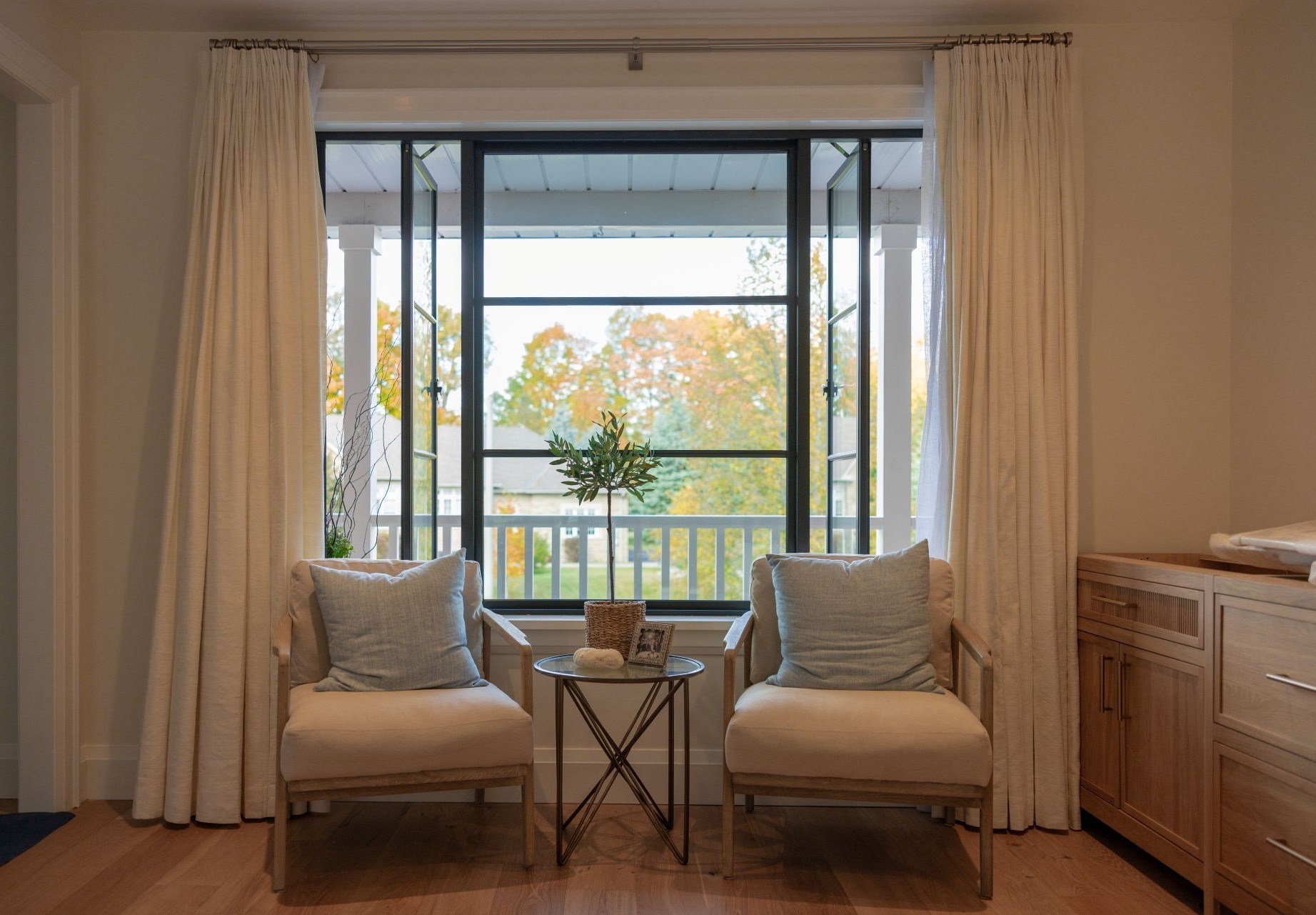
Besides the fact that there are multiple types of casement windows to choose from, you can also customize them in countless ways, starting from their color! Here are more details in this regard.
Frame Materials
Casement windows come in the following materials:
- Vinyl: affordable, low-maintenance, and energy-efficient, though less customizable in terms of color and finish; may warp and crack under extreme weather conditions.
- Wood: timeless elegance, energy-efficient, and ideal for traditional or cottage-style casements, but requires regular upkeep.
- Aluminum: strong, lightweight, and durable, best for modern designs but less insulating than vinyl or wood.
- Fiberglass: highly durable and energy-efficient, but more expensive upfront.
- Composite frames (like Magic's Hybrid Fusion Frame): superior durability, energy-efficiency, and strength.
Hardware Options
- Crank handles: standard for easy operation, especially on tall or hard-to-reach windows.
- Push-out levers: sleeker, crankless option for a more traditional appearance.
- Locking systems: multi-point locks enhance security, especially for in-swing or ground-floor casement units.
- Decorative finishes: hardware comes in finishes like brushed nickel, bronze, black, or polished brass to complement interior design.
Glazing Choices
- Double or triple glazing: improves insulation and energy efficiency.
- Low-E coatings: reduce heat transfer, as well as block harmful UV rays.
- Tinted or obscured glass: provides privacy while still allowing natural light.
- Decorative grilles: add character to cottage-style or traditional casements.
- Tempered or laminated glass: for safety and security.
Benefits of Casement Windows

Casement windows are one of the most favored window styles among homeowners because they offer a combination of functionality, efficiency, and aesthetics.
Superior Ventilation
Since casement windows open fully on their hinges, they allow better airflow compared to sliding or double-hung windows. Their sash design also lets you angle the window to catch side breezes. French casement units, in particular, provide an especially wide opening with no center obstruction.
Energy Efficiency
When closed, the casement window sash presses tightly against the frame, creating an airtight seal that reduces drafts and helps regulate indoor temperatures. This makes casements one of the best types of windows for minimizing heat loss in winter and keeping cool air inside during summer.
Clear, Unobstructed Views
Unlike double-hung or sliding windows, casement windows don’t have a central rail dividing the glass. This provides wide, uninterrupted sightlines to the outdoors. Bay and bow casements expand on this benefit by creating panoramic views and letting in light from multiple angles.
Ease of Use
Casement units are typically operated with a crank or push-out mechanism, which makes them easy to open even in hard-to-reach areas, such as above kitchen sinks. In-swing casement versions also make cleaning the exterior glass simple from inside the home.
Security
Casement windows often come with multi-point locking systems that secure the sash tightly at several points along the frame. This makes them harder to force open from the outside. In-swing casements offer additional peace of mind, as the sash is reinforced by the frame when shut.
Maintenance Tips for Casement Windows
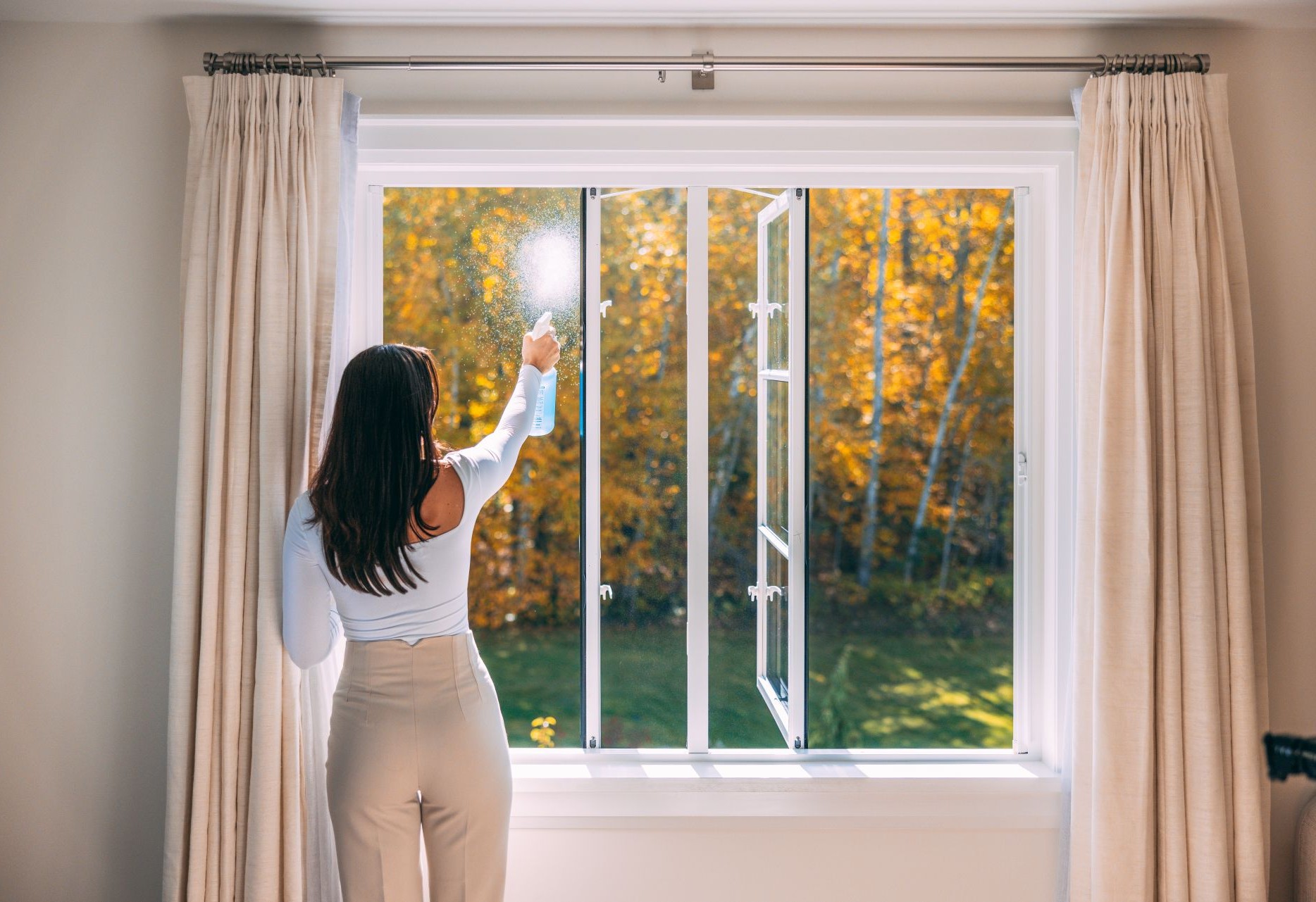
Casement windows are relatively low-maintenance, but, like with anything else, you do need to check/clean some parts once in a while to keep them operating smoothly and looking their best.
Clean the Glass and Frames
Wipe down glass with non-abrasive cleaners and keep frames free of dust, dirt, and debris. For wood frames, inspect for peeling paint or signs of rot and refinish when necessary. Vinyl, aluminum, and fiberglass frames generally only require occasional washing.
Check and Lubricate Hardware
Hinges, cranks, and handles should be cleaned and lubricated periodically to prevent stiffness and ensure smooth operation. Keep in mind that the maintenance requirements in terms of hardware differ depending on whether you have a crank-operated casement window or a push-out casement window.
Inspect Seals and Weatherstripping
Over time, seals and gaskets can wear out, allowing drafts to enter your home. Therefore, examine them at least once a year and replace any sections that are cracked, brittle, or loose. This is especially important in climates with extreme seasonal changes.
Test the Locks
Multi-point locking systems should be tested regularly to make sure they engage fully. If a lock feels loose or misaligned, make sure to adjust or repair it as soon as possible to maintain security and energy efficiency. French casement units may require extra attention since both sashes must align perfectly when closed.
Check Exterior Caulking
Inspect the caulking around window exteriors to prevent moisture infiltration. This is particularly important for bay and bow casement windows since they have more seams and joints where leaks can occur.
Looking for Innovative Casement Windows? Contact Magic!

Magic's crankless casement windows combine elegance, functionality, durability, energy efficiency, and modern convenience! In short, our innovative casement design is an outstanding option if you're looking for both style and performance. And here's why:
- Sleek, minimalist design: without the traditional crank handle and thanks to our ultra slim Hybrid Fusion Frame, our casement windows have a clean, streamlined appearance that complements modern and contemporary homes. No protruding hardware. No obstructed views. No bulky frames.
- Easy operation: Magic’s push-out mechanism ensures effortless opening and closing - much easier than with a crank! The sash glides smoothly along the frame, allowing you to adjust airflow precisely without extra effort, even for larger or hard-to-reach windows.
- Enhanced safety and security: Magic’s crankless windows are equipped with multi-point locking systems of grade-40 security rating (the highest in North America).
- Low maintenance: our advanced Parallex hardware makes Magic windows virtually maintenance free!
- Fully retractable window treatments: Magic windows can be equipped with our fully retractable bug screens, solar shades, and thermal blinds, all of which enhance functionality and energy efficiency!
Curious to learn more? Book a free consultation with us to see the magic with your own eyes! One of our project managers will provide you with a quote that is 100% tailored to your preferences and needs!
Frequently Asked Questions
What are casement-style windows?
Casement-style windows are hinged on one side and open outwards or inwards like a door, typically operated with a crank or push-out mechanism. They provide full ventilation, unobstructed views, and a tight seal when closed.
How do I identify my casement window?
You can identify a casement window by checking if it swings open on a side hinge rather than sliding up or sideways. Look for a crank handle or push-out mechanism that operates the sash.
What are the most affordable casement windows?
Single vinyl casement windows are generally the most affordable option due to their low material and maintenance costs. They are also energy-efficient and widely available in standard sizes
What is the main drawback to the use of a casement window?
The main drawback of casement windows is that they require exterior clearance to open fully, which can be a limitation near walkways, patios, or landscaping. They also need regular lubrication and inspection of hardware to ensure smooth operation over time.
How do I maintain my casement windows?
To maintain your casement windows effectively, regularly clean the glass, lubricate the moving parts, and inspect the weatherstripping and caulking. These steps will help ensure their longevity and optimal performance.
Can casement windows improve energy efficiency?
Yes, casement windows can improve energy efficiency by minimizing air leakage and providing a tight seal, which helps maintain stable indoor temperatures and reduce energy costs.